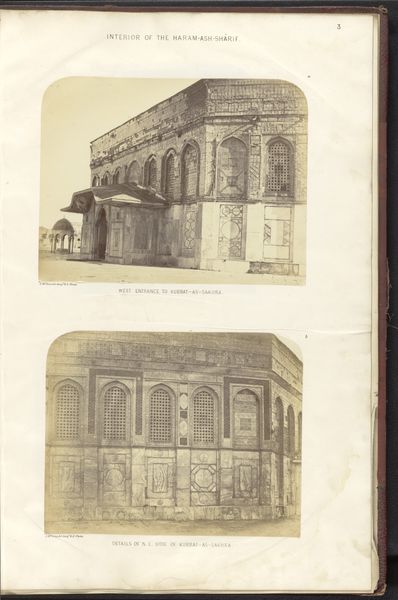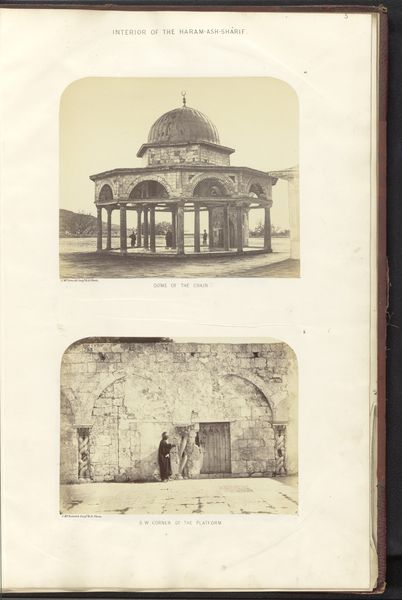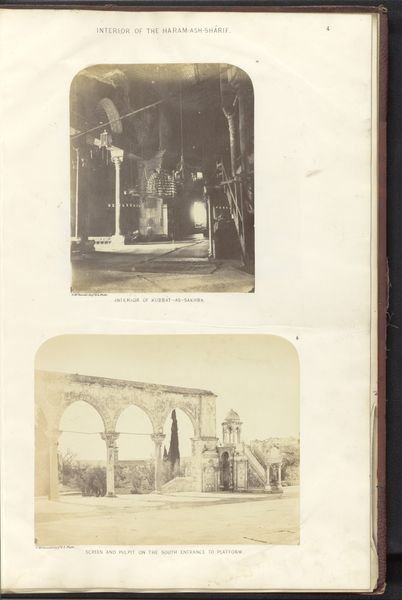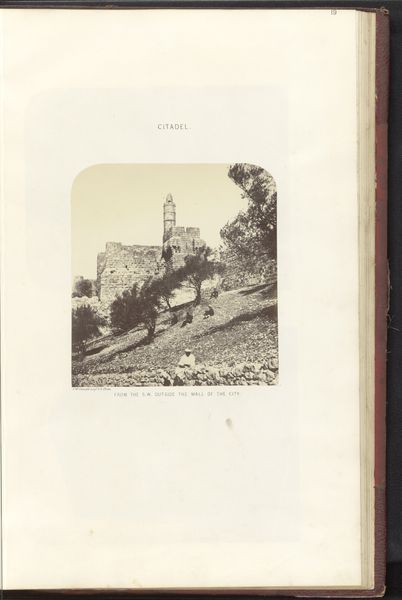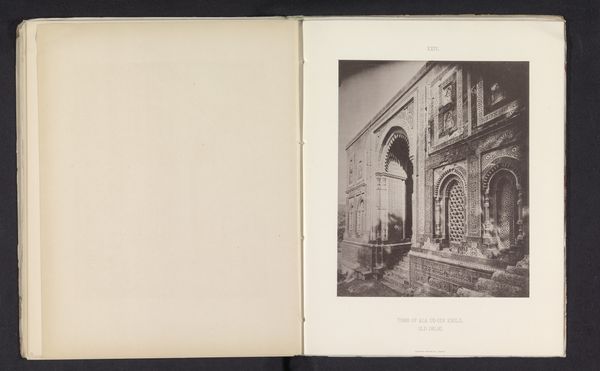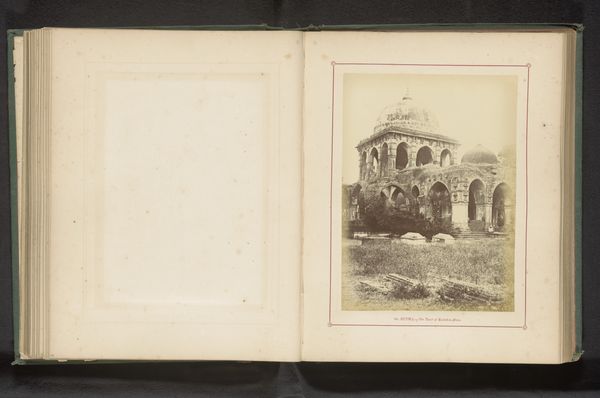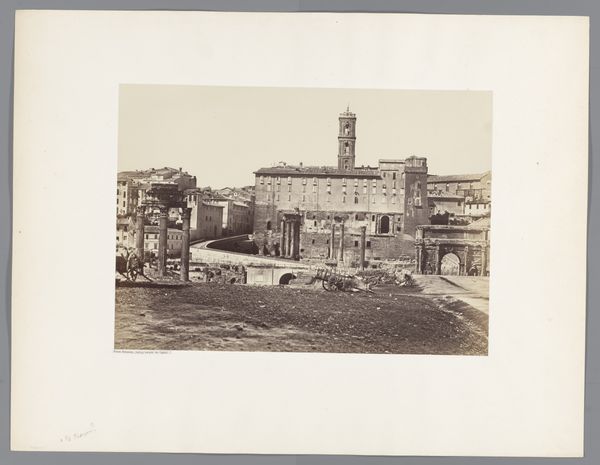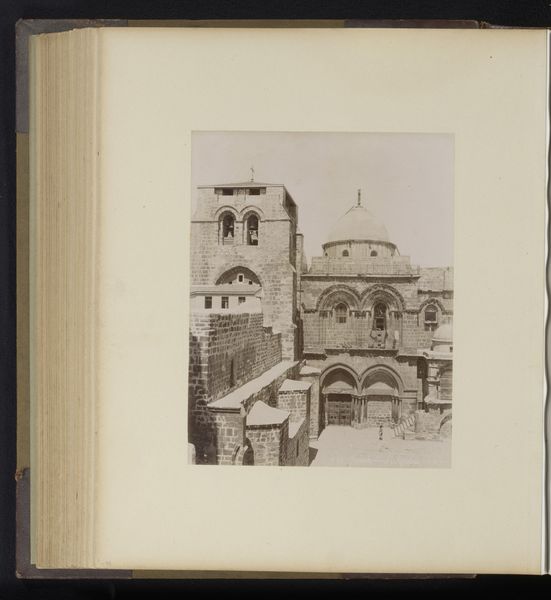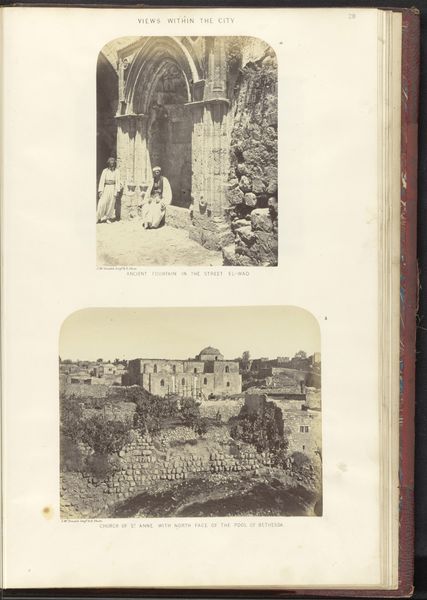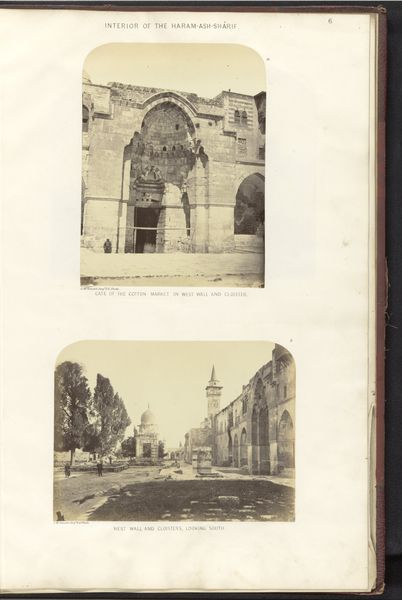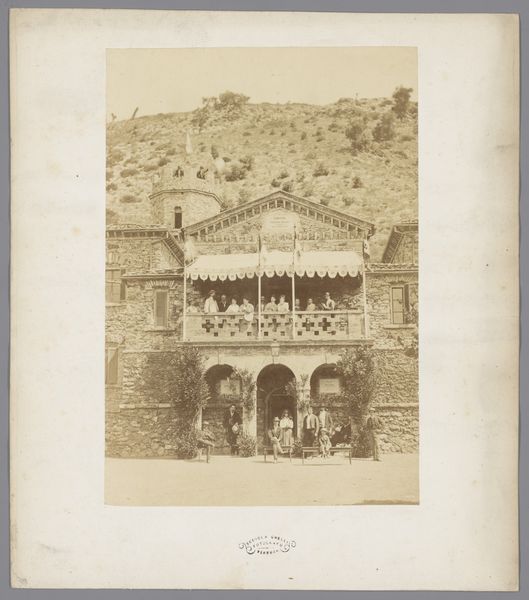
photography, albumen-print
#
landscape
#
photography
#
orientalism
#
islamic-art
#
albumen-print
#
realism
Dimensions: height 523 mm, width 340 mm
Copyright: Rijks Museum: Open Domain
Here, we see two photographs by James McDonald, capturing the Al-Aqsa Mosque on the Temple Mount in Jerusalem. Notice the repeated use of arches, which serve as more than mere architectural elements; they are symbols deeply embedded in the visual language of sacred spaces across cultures. These arches evoke a sense of passage, framing the divine. We find similar archways in Roman temples, early Christian basilicas, and even Renaissance cathedrals. This architectural motif transcends cultural boundaries, embodying the human desire to create thresholds to the sacred. Consider how this design has evolved—from the triumphal arches of Rome, celebrating earthly power, to the serene arches of Al-Aqsa, inviting spiritual contemplation. It is as if the collective memory of humanity has preserved this form, adapting its purpose while retaining its fundamental psychological impact. The arch becomes a powerful force, subconsciously guiding us toward reflection and understanding. The persistence of such symbols reminds us that history is not linear but cyclical, and that the echoes of the past resonate in the present, constantly shaping our perception.
Comments
No comments
Be the first to comment and join the conversation on the ultimate creative platform.
